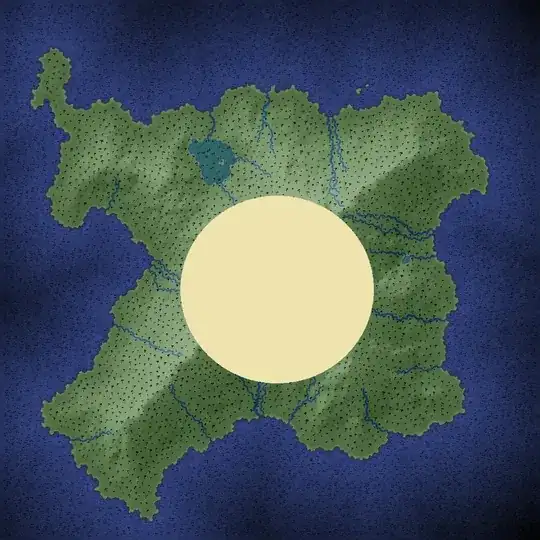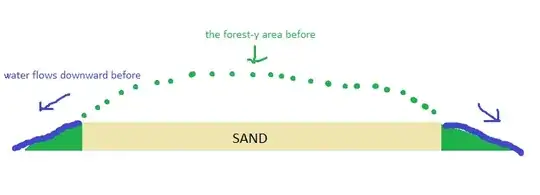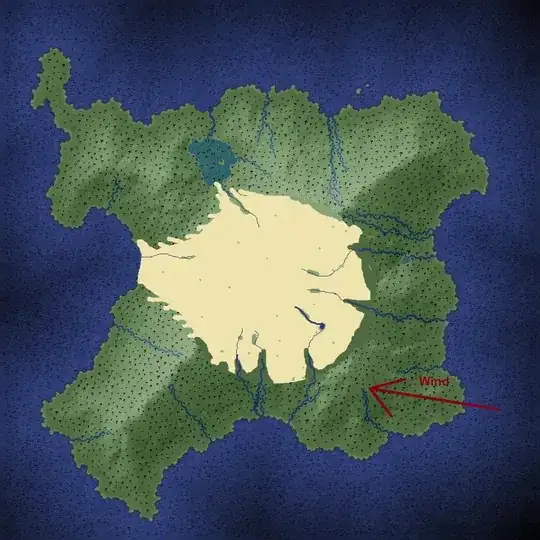First of all, I am tagging this with the magic because this phenomena is not a result of something natural.
What would happen to a whole forest region if a patch of desert magically appeared at its center? Below is an example of what I am trying to illustrate.
Note:
- The beige-coloured parts represents the desert that was magically displaced in the forest-y region
- Whole forest = 25 mile radius
- The climate is not transported
- The desert is a Sand desert
Here is an image to illustrate the elevation.
As you can see in the image, it is like the center of the forest was cookie-cutted and then replaced with this patch of desert. And also, the elevation would be flat.
Question: What would happen to the forest (by forest, I mean the forest with the desert in it) within 1 year and within 5 years?
I am mostly curious whether the forest will turn into a desert or the desert will turn into a forest.
With my proposition, let us assume that the magic only applies to the magical translocation of the said desert and nothing else. The forest is just a normal forest.
Thank you.
EDIT: This is a little off-topic, but this ought to help you guys for generating maps. If anyone is interested, this is the tool I used to generate this map. This tweet also contains excellent resources for generating something like this.


